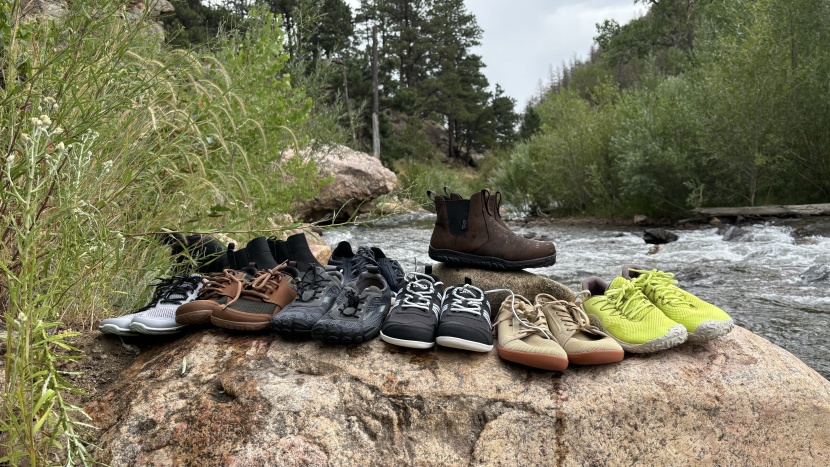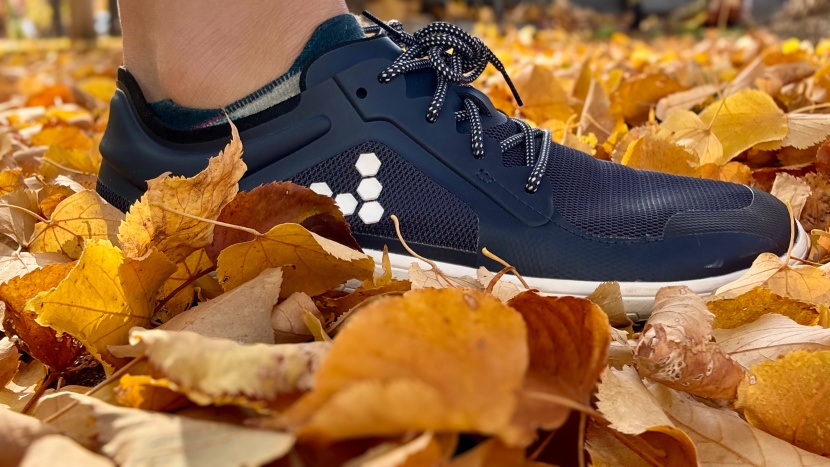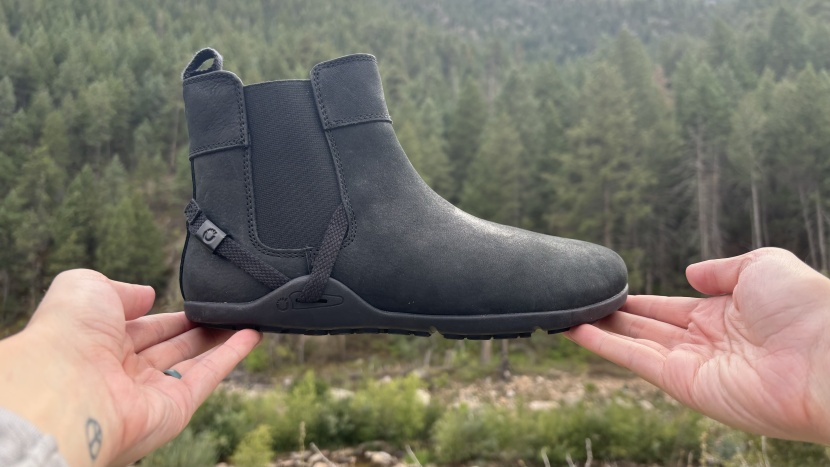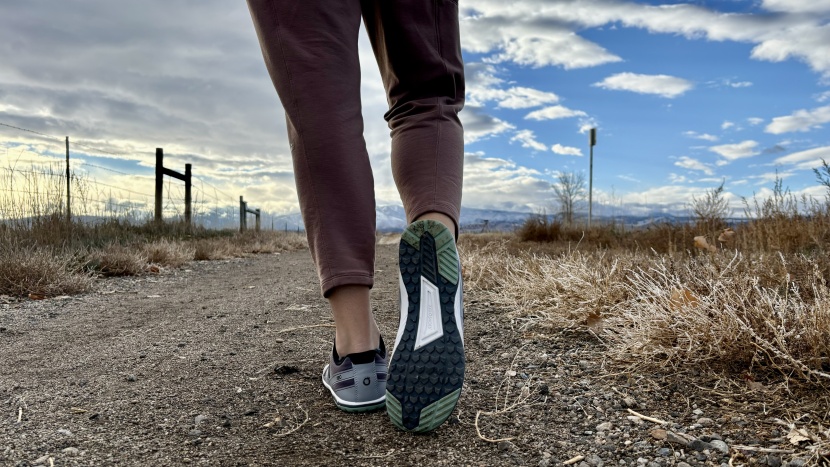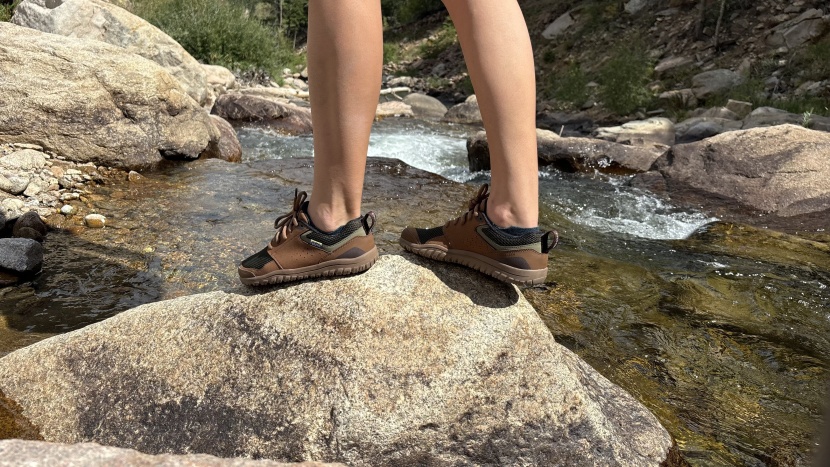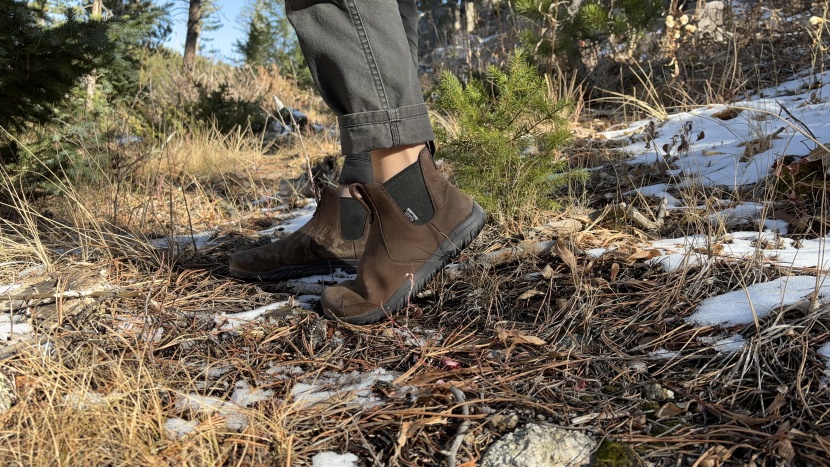To test women's barefoot shoes, we assembled five metrics, aiming for them to be mutually exclusive and collectively exhaustive in their assessments. This gave us a more clear picture of the strengths, weaknesses, and versatility of each product in a very interesting and competitive niche market.
Ground Feedback
To assess natural feel, we first spent a lot of time “feeling” in each shoe. We ran, walked, jumped, biked, skipped, climbed, hiked, and sought out rough and rocky terrain.
Then we got more objective and started measuring, researching, and assessing each shoe according to these criteria:- soft and supple sole
- wide toe box
- thin sole (under 15mm, typically)
- no arch support
- zero drop from heel to toe
- no toe spring
- lightweight
- breathable
Weight
This test was quite simple. We tied the shoes together and hung them on a scale. The weight reported is for the whole pair of two shoes together. A few scores got tweaked from there depending on how they felt on foot. Sometimes even slightly heavier shoes would feel lighter due to a better, more balanced design. This mostly showed up in regards to the sole weight and upper weight: if one was heavier than the other, the shoe felt clunky. If they were similar, the shoe more easily became an extension of our anatomy.
Traction
To assess traction, we first established what surfaces each shoe was meant for. We did not penalize any road running shoes for poor performance on trails. We then spent time running, walking, hiking, and parkour-ing around various environments and assessed how sticky the soles were and how well the lugs gripped the ground and shed loose dirt or allowed water to drain.
Another element of traction with minimalist footwear has to do with the soft, supple, thin soles. We often found that smooth soles performed surprisingly well in this category because they allowed our feet to grab the ground easier, thus relying less on lugs for traction. Very cool.
Versatility
We examined the design of each shoe, giving it points for any versatility it offered, but also assessing how well it breathed (for warm weather models) and how well it kept out water or dirt for those meant for cooler seasons or more rugged terrain. We considered the types and range of terrain each shoe was equipped to handle as well.
Durability
We spent many months testing these shoes and took them on a wide variety of terrain types. Our testing is inherently limited in its ability to determine how well the shoes will hold up a year or two from now, but our expert testers know a few things about materials and design, so we researched the specifications of each shoe and examined them for any manufacturing flaws or shortcuts.

